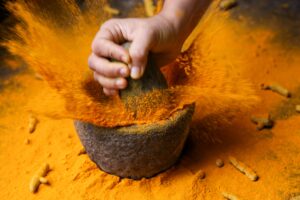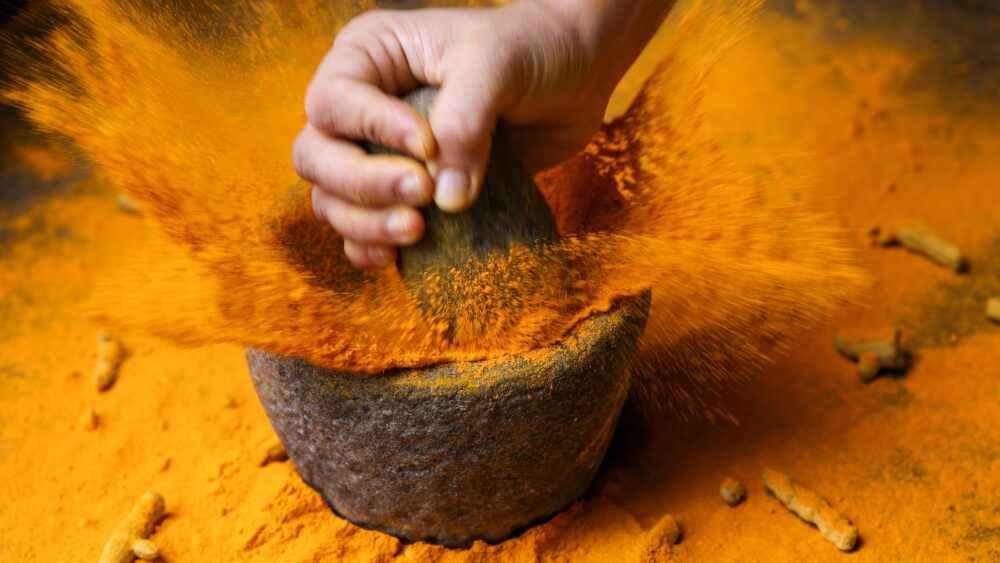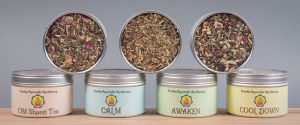 Ayurveda is slowly becoming more well-known in the West, but with so much varied information racing through the internet, it is all too easy for misinformation to manifest. Although there may be room for debate on these subjects, I thought I would take a moment to clarify some common confusions that I often see in my practice.
Ayurveda is slowly becoming more well-known in the West, but with so much varied information racing through the internet, it is all too easy for misinformation to manifest. Although there may be room for debate on these subjects, I thought I would take a moment to clarify some common confusions that I often see in my practice.
Since much of what Ayurveda teaches is subjective, it can be hard to really know what is correct sometimes. And similar to Yoga, there are many different Ayurvedic lineages, which can make it all the more confusing. The best path is to get your information from a knowledgeable, trusted practitioner, teacher, or authoritative text directly. When you hear different points of view from different schools of thought, it is best to use your personal experience and discriminative judgment to decipher which one holds more truth.
So as I attempt to debunk these “common myths of Ayurveda”, I will do my best to state my sources (when applicable) to put a little more validity in my words… and suggest (for all you skeptical Pitta types), to not just take my word for it, but question, investigate, and experience for yourself!
Five Common Ayurvedic Myths
Myth #1
Taking ghee and honey in the same quantity (by volume) is toxic.
It is indeed true that Ayurveda strongly states that taking ghee and honey in equal amounts is toxic; however, the authorities have clearly distinguished that the equal amounts refer to weight, not volume. And since honey weighs much more than ghee, taking equal amounts of honey and ghee by volume (say 1 teaspoon to 1 teaspoon) would not be toxic. Further, taking unequal quantities of ghee and honey (by weight) is considered an energizing, rejuvenative tonic, as these two substances work synergistically to enhance the healing properties of each other.
If you are still a disbeliever, great! You should always question what you read on the internet. I have heard my trusted teacher and master Ayurvedic doctor, Dr Vasant Lad, state this distinction countless times while studying at the Ayurvedic Institute. He also clearly states this distinction in his Textbook of Ayurveda Volume 1 (page 261):
“. . . equal quantities by weight of ghee and honey are a bad combination; this is approximately equal to 3 parts of ghee to 1 part honey by volume. Any other ratio of the two is not toxic.”
Dr Lad makes this distinction again in his Textbook of Ayurveda Volume 3 (page 74):
“. . . equal quantities by weight of ghee and honey are a bad combination. This works out to a ratio of about 3:1 by volume—three parts ghee to one part honey. Mixing unequal weights is not toxic, only an equal weight.”
NOTE: I have also read this distinction directly from the ancient authoritative text, Charak Samhita. Unfortunately, I did not write the page down and have not been able to find it since. When I come across it again, I will add a quote and chapter/verse reference as well. If you happen to know it off hand, please comment below!
Myth #2
You must be a vegetarian to eat an Ayurvedic diet.
It is a common misconception that eating an Ayurvedic diet requires being a vegetarian. Although eating a vegetarian diet is welcome in Ayurveda, it is not mandatory. On the contrary, it may even be recommended to eat meat and meat broths for certain body types (e.g. Vata and sometimes Pitta) and imbalances (e.g. depletion, anemia, underweight, restlessness, etc).
Of course, it is always essential to respect an individual’s decision to eat meat or abstain from it, but if eating meat is necessary for your healthcare needs and you are open to it, then meat can be healing in the proper quantity and context.
If you are still skeptical, Chapter 6 (XI) of Bhavaprakasha (one of the Laghu Trayi of Ayurveda) is titled “Mamsavarga” or “Groups of Meat” and goes over the qualities and effects of eating various meats, poultry, and fish.
Here is a quote taken from the first verse of this chapter:
“Mamsa (meats) mitigate Vata, stouten the body, bestow strength and nourishment, and contentment; hard for digestion, good for the heart, sweet in taste, and also at the end of digestion (meaning sweet in vipak).”
You can also find meat or meat juice (broth) being prescribed numerous times throughout the Charak Samhita, mainly when dealing with Vata disorders.
A FEW NOTES
• If you do eat meat, it is important to source your meat from small farms with humane practices.
• Meat is hard to digest—if your digestion is weak but your body needs more nourishment, it is best to begin slowly with meat soups and broths.
• Some body types and imbalances may do best with a plant-based diet—this is often true with Kapha types and Kapha imbalances.
• If you are opposed to eating meat for any reason but are experiencing high Vata (underweight, anemia, depletion, restlessness), there are likely other “building foods” that you can add to your diet (nuts, seeds, ghee, whole grains, sweet potatoes, beets, mangos, dates, eggs, whole milk, yogurt etc).
Myth #3
You can never eat leftovers on an Ayurvedic diet.
Although eating freshly cooked food is always best, this Ayurvedic food rule is not always black or white. Instead, you can think of this rule on a spectrum. On one side, you have the perfect ideal of always eating homemade fresh meals each day; on the other side, you are eating stale, unhealthy, prepackaged, processed food that has been sitting in your fridge for a week. But there are so many variations in the middle. So instead of stressing about making every meal fresh, you can look at the healthiest (realistic) options for your daily schedule and current life situations and begin there.
If you are like many of us, making every meal fresh may not be a viable option. So instead of turning away from Ayurveda altogether, let’s find a healthy and suitable compromise.
Here are a few health tips to keep in mind with leftovers:
• Meal prepping can be a great option for eating healthier throughout the week if you have a busy schedule.
• Eating healthy home-cooked leftovers is often much healthier than eating out, eating prepackaged, processed foods, or skipping meals altogether.
• Eating nourishing home-cooked leftovers such as soups, stews, kitchari, Buddha bowls, rice and bean bowls, and stir-fries is a better option than eating a PB & J or deli meat sandwich.
• Eating nourishing home-cooked leftovers is better than snacking your way through a meal.
• Eat leftovers within 1 to 2 days when possible.
• Reheat your leftovers on a stove rather than a microwave—you may want to consider a large, insulated food thermos if this is not an option.
• Of course, if you can cook every meal fresh at home, that is amazing, and by all means, go for it!
Myth #4
You must always follow the food lists for your dosha type.
The doshic food lists (i.e. Vata Diet Chart, etc) are great places to begin if you are new to Ayurveda, but like any general list, they have their limitations. Ayurveda is a science based on treating each individual as a unique being, making it impossible to put anyone into a paradigm. Our bodies and digestions are extremely complex, and “A” does not always equal “B”.
Although it is all right to use these food lists as helpful guidelines, it is essential to remember that your personal experience with a food or diet is much more important than a list you read on the internet. If you are a Vata type but do really well with legumes, then there is no reason to avoid them. If you are a Pitta type but would like to enjoy a small amount of fermented foods once in a while (and it is not aggravating for you), I say enjoy!
And finally, foods can be on a spectrum of how aggravating they are to a certain dosha type, and this should also be held in consideration. For example, zucchini and ice cream are both said to be Kapha-increasing, but eating zucchini will be much less disturbing than eating a bowl of ice cream. Similarly, a Pitta-type can get away with eating some brown rice (which is warming) a lot easier than eating chili peppers or fried food.
Myth #5
Your Prakriti (inborn constitution, also called “dosha type”) can change over time.
Your dosha type (Dosha Prakriti) is set at the time of your birth and remains the same throughout the entirety of your lifetime (except for rare cases such as near-death experiences and extremely severe childhood trauma). This means if you were Kapha predominant as a child, you are still a Kapha type, no matter your age, current life situation, or level of health.
You may be asking,
“Why am I so different than when I was a child. I used to be a skinny mini Vata with tons of energy, but after having kids, I gained a lot of weight and now feel heavy and sluggish all the time. Am I not a Kapha-type now?”
You may feel like a Kapha at this point (and indeed you will want to treat Kapha), but you would actually be a Vata type with a strong Kapha imbalance. Your Kapha is so increased that it has overtaken Vata and has masked your mental and physical attributes to seem more Kapha. If you were to balance your Kapha to its original state, your Vata will happily shine through.
This theory has been taught to me by world-renowned teacher and Ayurvedic doctor, Dr Vasant Lad, during my studies at the Ayurvedic Institute. You can see it in writing in his Textbook of Ayurveda Volume 1 (page 36):
“The Prakruti, one’s genetic code, does not change in one’s lifetime, except in rare cases.”
Conclusion
The theories I have shared with you come from my studies in Ayurveda, as well as my experience in my practice and my own life. However, Ayurveda is an age-old medical science that was originally an oral tradition (meaning it was only taught verbally) and eventually written down in texts in the Sanskrit language (with many different translations since). Hence, there are many schools of thought when it comes to what is true knowledge or otherwise. The best you can do is to find trusted sources (ideally a teacher, practitioner, or authoritative text) to use as your guides and begin to explore for yourself. Do not be afraid to question and investigate, but do so with a clear mind and open heart.




Thank you SO MUCH for clarifying these common misconceptions Danielle. It is a blessing that you are sharing ancient wisdom in a way that is approachable and makes sense. Take good care!
This was an excellent clarification of topics misunderstood. Thank you for writing this and sending out!
Ayurveda and the teachings of Dr. Lad are precious gifts!